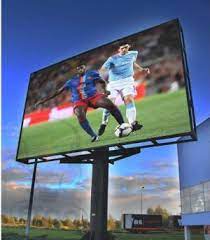The 2 most popular types of LED downlight are SMD (Surface Mount Diode) and COB (Chip on Board) downlights. Both produce high-quality light, have a high life expectancy and are extremely efficient.
WHAT IS SMD (SURFACE MOUNT DIODE)?
SMD Screen are more efficient than COBs because the light source produces higher lumens per watt, meaning they produce more light with lower wattage.
They produce a wider beam of light that extends over a larger area. This means less material is required for the heat sink, which in turn means they are cheaper. The manufacturing process for making them is more expensive because SMD diodes (LED chips) are machine printed on a printed circuit board. Most down lights in the home use SMD LEDs. SMD down lights are covered with a matte reflector that hides the LED chipset and spreads the light evenly.
WHAT IS COB (CHIP ON BOARD)?
A recessed LED Chip On Board lamp consists of a single LED chip, mounted on the down light, compared to a series of LEDs such as an SMD. Because the single group of LEDs are mounted at a point, they require more cooling, so a larger heat sink, usually aluminum, must be mounted to dissipate heat. As more material is required to produce a COB LED heat sink, it usually increases the cost slightly.
WHAT ARE THE ADVANTAGES OF BOTH?
COB downlights provide a better light source. A more focused light is achieved and the light beam can be controlled with the help of reflectors. The chrome reflectors around the diode can be replaced at different angles and configured to make the light beam narrower or wider.
Due to the narrow beam and with the use of reflectors that are normally transparent, COB lamps generate cooler and cleaner light because there is no frost on the lenses. that reduces the brightness of the LED light. Transparent lenses allow lighter to penetrate, meaning they work well in rooms with high ceilings.
Types of SMD LEDs: all the ones you need to know
There are different types of SMD LEDs, each variant is identified by means of a series of numbers that define its size and associated brightness level. The LED identification number corresponds to the dimensions, expressed in millimeters, of the chip itself.
As regards the main types of SMD LEDs, the most widespread on the market are the 3528. It is one of the first LEDs to appear on the market and is characterized by a power of between 6 and 8 lumens, a consumption of 0.20W, and a somewhat reduced light output.
The 5050 SMD LEDs guarantee a power of between 16 and 22 lumens. They are among the first chips capable of generating greater power and, therefore, are suitable for general lighting needs.
The 5630 and 5730 SMD LEDs were recently developed, they guarantee good brightness with limited consumption and, for this reason, they are very widespread. These are outdoor SMD screen LED diodes suitable for use where high lumens are required.
Finally, the 2835 and 3014 SMD LEDs are identified as the devices with the longest life and best performance, thanks to the presence of the heat sink inside them which prevents the source from overheating. This type is usually used on LED strips with both lighting and purely decorative functions.
Recommended Article: Dr.Munavvar Izhar, MD: A Experienced MD Specializing in Nephrology



